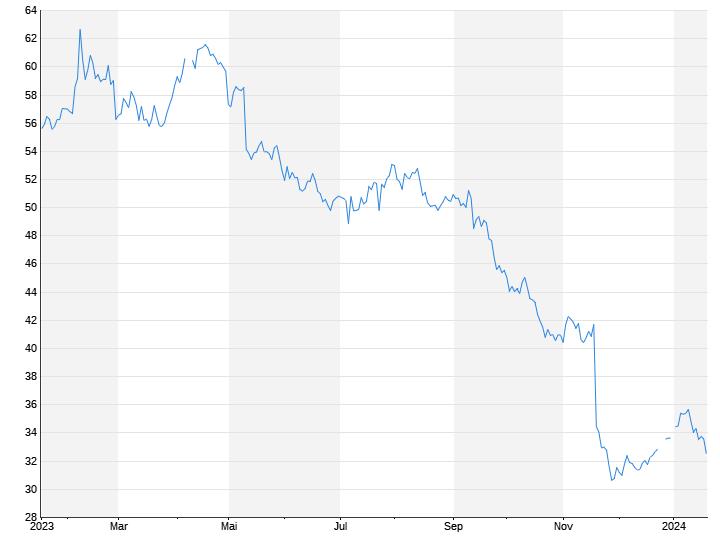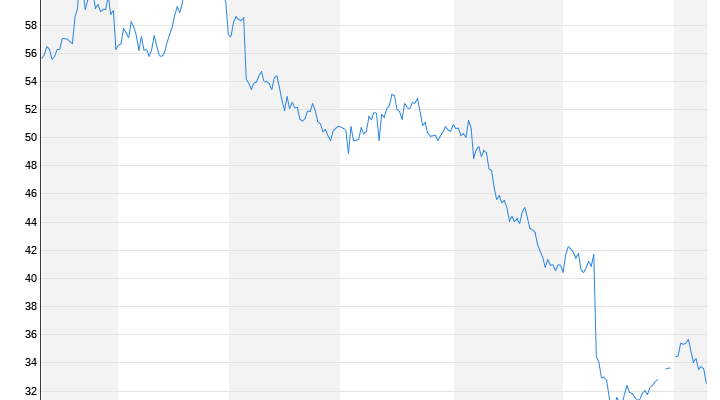Corporate restructuring and job cuts
Five reasons why Bayer boss Anderson is pulling the emergency brake
By Diana Dittmer
January 18, 2024, 7:12 p.m
Listen to article
This audio version was artificially generated. More info | Send feedback
Things are getting uncomfortable for the 20,000 or so Bayer employees in this country. Business is going badly and billions in debt are pressing. Bayer boss Bill Anderson now wants to use his might to prepare the company for success. An overview of the construction sites in the DAX group.
After six months in the top job, Bayer boss Bill Anderson is following up on announcements from his early days with action. The American is launching a strict austerity program. In the future, it is probably not just the 22,000 employees in Germany who will have to prepare for “drastic measures”. The group has around 100,000 employees worldwide. The usefulness of management functions should also be examined abroad. Changes in the group structure cannot be ruled out.
What is ailing the DAX group?
1. Bloated administrative apparatus, too long official channels: CEO Bill Anderson is an avowed supporter of lean corporate administration. The work processes at Bayer were too complicated for him from the start. He criticized early on that there were up to twelve levels of hierarchy between him and the customer. Things will be different in the future. “In the future, virtually everyone in the company will work in small, self-managed teams focused on one customer or one product – just like a small business owner would,” Anderson announced. He had already explained his ideas when he started working at Bayer in spring 2023 and also praised the management book “Humanocracy”. This is about giving employees as much freedom as possible, but also responsibility. However, that also means fewer jobs. The cultural change should now begin. It is still unclear what financial savings will be possible through the new organizational structure. Internal analyzes should show this.

2. The pressure to save is high, things are not going well in either the pharmaceutical or agricultural sectors: There is a lack of new blockbusters in the pharmaceutical business. The patents are expiring for long-standing profit generators such as the eye drug Eylea and the anticoagulant Xarelto. Billion-dollar revenue generators are no longer available and revenues fall. It was only in November that Bayer failed in a study of a new active ingredient, Asundexian, which was supposed to offer a therapeutic advantage over standard treatment in patients with atrial fibrillation and at risk of stroke. However, the opposite was the case. Copycat preparations from competitors are putting additional pressure on the German company. At the same time, the agricultural business is groaning under a high debt burden. The agricultural division (Crop Science) is suffering from low prices for the weed killer glyphosate. In the third quarter, herbicide sales were 365 million lower than in the second quarter. This was made worse by impairments in the agricultural division in the third quarter of 2023 due to higher interest rates. The bottom line was that there was another billion-dollar loss.
3. Expensive lawsuits – the legacy of the takeover of Monsanto: Legally, the Monsanto issue has not been resolved even five years after the $60 billion purchase. The costs of legal disputes in the USA surrounding the alleged cancer risks of glyphosate products now run into the billions. Bayer has lost numerous court cases since 2018. Anderson’s predecessor, Werner Baumann, is responsible for the expensive mistake. The long-standing Bayer CEO had arranged the purchase of the US company – which already had a dubious reputation at the time – with the then chairman of the supervisory board, Werner Wennig, because the managers feared that Bayer itself could become the target of a takeover due to its lack of size. Anderson now has to suffer.
4. A mountain of debt: The group has high liabilities – almost 39 billion euros net at the end of the third quarter. The cash flow was also negative at almost three billion euros. This means that more money flowed out than was received. “Bayer has more debt than the group is worth on the stock market,” commented fund manager Markus Manns from Union Investment, the cooperative banks’ fund company, when presenting the third quarter figures.
5. Fatal price development: Bayer is under huge pressure from investors in terms of profitability. The The share price has lost a good 42 percent of its value in the last twelve months alone. The plans to slim down the organizational structure are therefore not surprising. However, US investors and shareholders such as Union Investment in particular have been calling for more initiative for some time. They want the group to abandon its current mixed structure and concentrate on individual areas. “It would make most sense to separate from Consumer Health as part of a spin-off,” said portfolio manager Markus Manns “Capital”. On the stock exchange, the individual parts of the company would together be valued more highly than the previous conglomerate. Bayer consists of three divisions: Pharma, Crop Science (agricultural business) and Consumer Health (non-prescription medicines). Bayer boss Anderson is fundamentally open to a spin-off of the crop science or consumer health divisions (non-prescription drugs), as he already admitted to the US news services Reuters and Bloomberg. Under no circumstances would Bayer separate from both areas, he said. Anderson plans to present more detailed plans in March.
